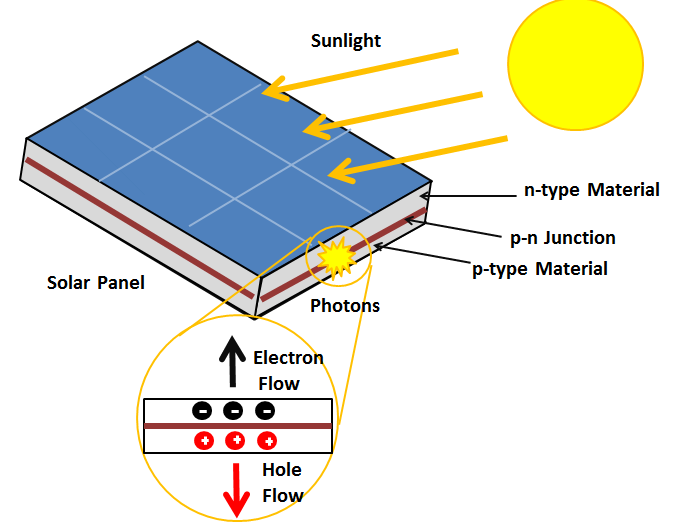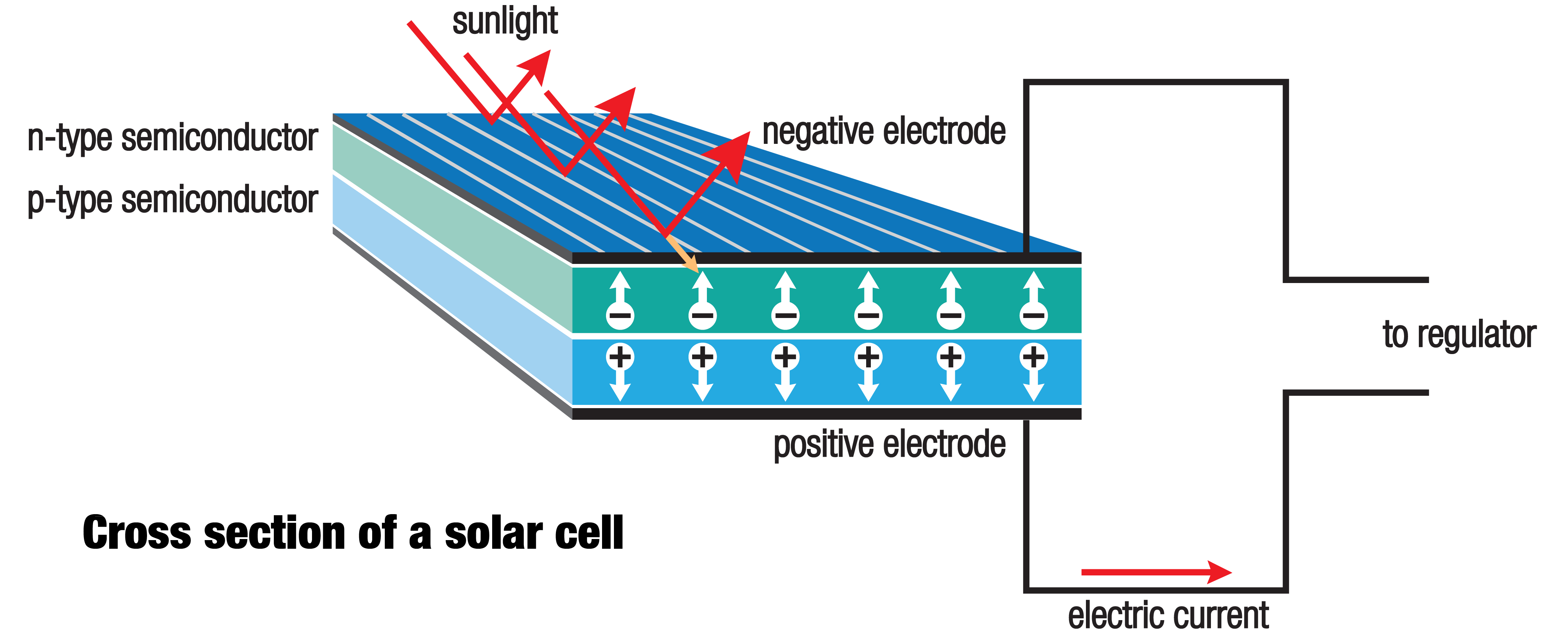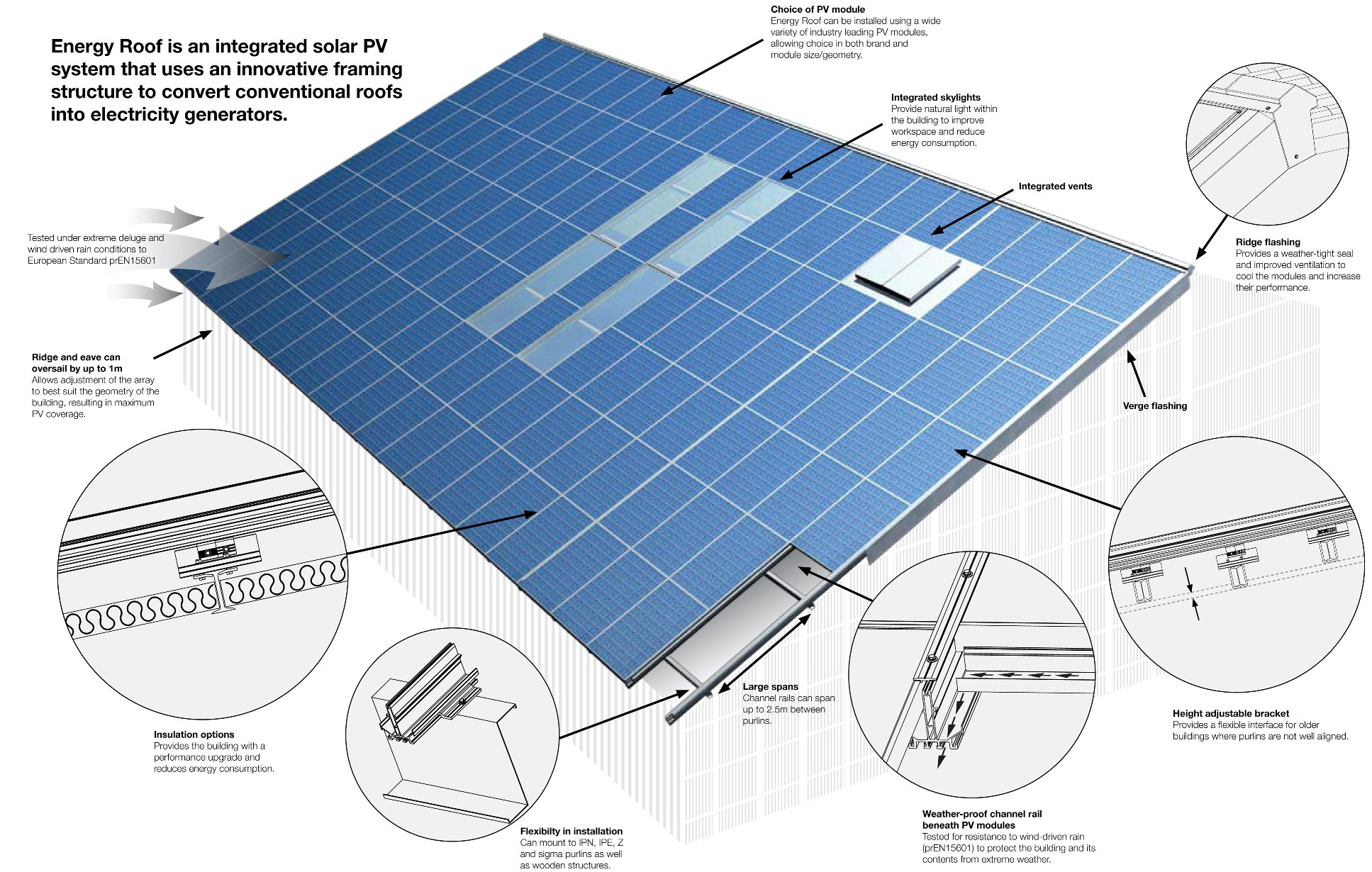Let’s kick things off with the basics. Photovoltaics, often called PV technology, is the science of converting sunlight directly into electricity using specially designed materials. These materials, known as semiconductors (you might’ve heard of silicon), absorb sunlight and kick-start a process that creates an electrical current. It’s basically the magic trick of turning sunshine into power—except there’s no sleight of hand involved, just solid science.
At its core, photovoltaics revolves around the photovoltaic effect—a phenomenon discovered way back in 1839 by a guy named Edmond Becquerel. Who knew that messing around with electrodes in a solution could lead to the technology lighting up millions of homes today?

Why Photovoltaics Matter
Here’s the deal: our planet could use a little break from fossil fuels. Enter photovoltaics, a renewable, clean energy source that harnesses something we have in abundance—sunlight. The sun delivers more energy to Earth in a single hour than we use globally in a whole year. It’s an endless resource (at least for the next 5 billion years or so, but who’s counting?).
Photovoltaics plays a crucial role in reducing carbon emissions, combating climate change, and increasing energy independence. Plus, for those of us tired of rising electricity bills, switching to solar is like finding a cheat code for energy savings.
How Photovoltaics Work: An Overview
In simplest terms, this is what happens:
- Sunlight hits a photovoltaic cell—a small component made of semiconductor materials.
- The cell absorbs light, exciting the electrons inside (think of them like partygoers suddenly amped up when the DJ starts playing).
- These excited electrons flow through the material, creating an electric current.
- The current is collected and directed to power anything from your toaster to your Tesla.
The beauty of photovoltaics is that this entire process is clean, renewable, and, aside from initial setup, cost-effective. It’s like having a little slice of the sun working for you, 24/7 (well, technically not at night, but you get the idea).

The Science Behind Photovoltaics
Understanding Photons and Solar Energy
Let’s talk about photons. These tiny particles of light are essentially packets of energy sent hurtling through space by the sun. They’re small, fast, and pretty much unstoppable. When photons hit Earth, they bring with them massive amounts of energy. In fact, every square meter of our planet receives about 1,000 watts of energy on a sunny day—that’s enough to power a microwave, a TV, or a bunch of LED lights simultaneously.
Now, here’s where things get interesting: photovoltaics taps into this constant stream of energy by capturing photons and using them to generate electricity. The more sunlight you can capture, the more photons you snag—and the more power you can create. This is why solar panels are most effective in sunny places like Arizona or Australia, but don’t worry—they can still work on cloudy days, just not as efficiently.
The Role of the Photovoltaic Effect
The photovoltaic effect is the engine that makes this whole process tick. Discovered by Edmond Becquerel when he was just 19 (show-off, right?), it’s the phenomenon where certain materials generate an electrical current when exposed to light.
Here’s how it works in plain English:
- Photons from sunlight strike a photovoltaic cell.
- These photons transfer their energy to electrons in the material, making the electrons move around.
- This movement of electrons creates an electric current, which can then be harnessed and used.
It’s like when caffeine hits your bloodstream—you suddenly get moving, but in this case, it’s electrons doing the heavy lifting.
How Photovoltaic Cells Convert Sunlight Into Electricity
Okay, let’s break down the process step by step:
- Absorption of sunlight: When sunlight hits a photovoltaic cell (usually made of silicon), the cell absorbs photons, which energizes its electrons.
- Exciting the electrons: The energy from the photons gives the electrons enough “oomph” to break free from their atoms, creating free-flowing particles.
- Creating an electric field: Photovoltaic cells are built with two layers of silicon—one positively charged and one negatively charged. This creates an electric field, a bit like the magnetic poles of a magnet, but for electricity. This field pushes the free electrons in a specific direction.
- Flow of electricity: The electrons are captured by tiny wires embedded in the cell and channeled into an external circuit as an electric current.
This current is in direct current (DC) form, so before it can power your home, it needs to pass through an inverter to be converted into alternating current (AC)—the kind of electricity our appliances and devices use.
Here’s a fun fact: the average efficiency of a solar cell is around 15-22%, meaning only a fraction of sunlight gets converted into usable energy. But as science evolves, researchers are pushing that number higher, even testing materials like perovskite to increase efficiency and lower costs.
Why This Matters
Understanding the science behind photovoltaics helps us appreciate how far we’ve come. What used to be a quirky lab experiment is now a major player in the global energy mix. And let’s not forget the elegance of it all—this entire process is silent, clean, and doesn’t rely on burning anything. It’s a small step for a photon, but a giant leap for renewable energy.

Components of a Photovoltaic System
When we talk about photovoltaic systems, we’re not just discussing solar panels slapped onto a roof. A fully functional system involves multiple components working together seamlessly to transform sunlight into electricity and get it to your devices. Let’s take a closer look at each piece of this solar-powered puzzle.
Photovoltaic Cells: The Building Blocks
At the heart of any PV system lies the photovoltaic cell. These tiny cells are where the magic happens—they convert sunlight into electricity through the photovoltaic effect. Most photovoltaic cells are made from silicon, a semiconductor material that’s both abundant and efficient.
Types of photovoltaic cells include:
- Monocrystalline Silicon Cells: The OG of solar cells. They’re sleek, highly efficient, and long-lasting but tend to be pricier.
- Polycrystalline Silicon Cells: A more affordable option, though slightly less efficient. They have a bluish tint and are great for budget-conscious homeowners.
- Thin-Film Solar Cells: Lightweight and flexible, these are perfect for unique applications like portable solar chargers or curved surfaces, though they aren’t as efficient as their crystalline cousins.
While a single cell doesn’t generate much power (typically less than 5 watts), combining many cells creates the next key component: solar panels.
Solar Panels: The Power Collectors
Solar panels, also called PV modules, are essentially an array of photovoltaic cells connected together and encased in protective glass. These panels are designed to maximize sunlight absorption while withstanding harsh weather conditions like rain, wind, or snow.
Here’s an interesting fact: A standard residential solar panel typically has 60 to 72 cells and can produce about 250 to 400 watts of power, depending on its efficiency. Modern panels are designed to last 25 years or more, making them a long-term investment for clean energy.
Inverters: The Power Transformers
Electricity from solar panels comes in direct current (DC) form, but your home uses alternating current (AC). Enter the inverter, which acts as the translator between your solar panels and your appliances.
There are three main types of inverters:
- String Inverters: A cost-effective solution for systems with panels all connected in series.
- Microinverters: These work on a per-panel basis, offering better performance for systems where some panels may experience shading.
- Power Optimizers: Similar to microinverters but work in conjunction with string inverters to boost efficiency.
Choosing the right inverter is crucial, as it determines how efficiently your system converts and delivers power.
Mounting Systems: Positioning for Peak Performance
Solar panels don’t just sit there; they need sturdy mounting systems to hold them in place. These systems also play a big role in optimizing energy capture.
- Fixed Mounts: Stationary setups that hold panels at a fixed angle. While simple and affordable, they don’t adjust to the sun’s movement.
- Tracking Systems: These advanced systems follow the sun across the sky, maximizing sunlight exposure. While more expensive, they can increase energy production by 20-30%.
For rooftop installations, the angle and orientation of the panels are key to ensuring they soak up as much sunlight as possible. Pro tip: South-facing panels in the Northern Hemisphere are ideal.
Storage Options: Batteries and Beyond
If you want to use solar power when the sun isn’t shining (hello, nighttime or cloudy days), you’ll need a way to store it. That’s where batteries come into play.
- Lithium-Ion Batteries: The most popular choice due to their high energy density, long lifespan, and relatively compact size.
- Lead-Acid Batteries: A cheaper but bulkier option, often used in off-grid setups.
- Flow Batteries: Emerging technology that offers scalability and long durations, though it’s still a bit pricey.
Energy storage allows homeowners to go fully off-grid or store excess power for use during peak demand times, potentially saving even more on utility bills.
The Big Picture
These components work together like a well-rehearsed orchestra, each playing its part in capturing, converting, and delivering solar energy. Without one of these elements, the system simply wouldn’t work as efficiently—or at all.

Types of Photovoltaic Technology
Not all photovoltaic systems are created equal. As the demand for solar energy has grown, so has the variety of technologies designed to harness the sun’s power. Each type of photovoltaic technology offers unique benefits and applications, catering to diverse needs—from small-scale residential systems to massive solar farms. Let’s explore the three main generations of photovoltaic technology.
First-Generation Photovoltaics: Crystalline Silicon Solar Cells
This is the classic, most widely used form of photovoltaic technology. Crystalline silicon cells dominate the market, accounting for over 90% of solar installations worldwide. Why? Because they’re reliable, efficient, and have stood the test of time.
- Monocrystalline Silicon:
These are the most efficient of the bunch, boasting efficiencies of 20-22%. They’re made from single-crystal silicon, giving them a uniform appearance (often black) and excellent performance, even in low-light conditions. However, they’re also the most expensive, making them ideal for those who prioritize efficiency over cost. - Polycrystalline Silicon:
These are a more budget-friendly alternative, with efficiency rates ranging from 15-17%. They’re created from multiple silicon crystals melted together, giving them a distinct bluish color. While not as efficient as monocrystalline cells, they still provide solid performance and are perfect for homeowners seeking a balance between cost and output.
Second-Generation Photovoltaics: Thin-Film Solar Cells
Thin-film technology represents a newer, more flexible option for photovoltaic systems. These cells are made by depositing ultra-thin layers of photovoltaic materials onto a substrate like glass, plastic, or metal.
Key characteristics of thin-film solar cells:
- Flexibility: Thin-film cells can be integrated into unconventional surfaces, such as curved rooftops, vehicles, or even clothing.
- Lightweight: Their reduced weight makes them easier to install in locations where traditional panels might be impractical.
- Lower Efficiency: Thin-film cells typically have efficiencies of 10-12%, which is lower than crystalline silicon. However, their versatility often outweighs this drawback.
Common types of thin-film materials include:
- Cadmium Telluride (CdTe): The most widely used thin-film technology, known for its low production cost and excellent performance in hot climates.
- Amorphous Silicon (a-Si): Popular for small-scale applications like calculators or portable solar chargers.
- CIGS (Copper Indium Gallium Selenide): Offers higher efficiency compared to other thin-film options but comes at a higher price.
Third-Generation Photovoltaics: Emerging Technologies
Third-generation photovoltaics represent the cutting-edge of solar research and development. These technologies aim to overcome the limitations of existing systems by improving efficiency, reducing costs, and expanding potential applications.
Here are a few exciting advancements to watch:
- Perovskite Solar Cells:
A hot topic in the solar world, perovskite cells are lightweight, flexible, and highly efficient, with the potential to surpass silicon in performance. They’re also cheaper to produce, though challenges like long-term stability and scalability are still being addressed. - Multi-Junction Solar Cells:
These cells stack multiple layers of different materials to capture a broader spectrum of sunlight, achieving record-breaking efficiencies of over 40%. They’re currently used in space applications and may eventually trickle down to consumer markets. - Organic Photovoltaics (OPV):
Made from organic compounds, these cells are lightweight, flexible, and can be printed like newspapers. While still in the early stages of development, OPVs offer exciting possibilities for integration into everyday items like windows or clothing. - Quantum Dot Solar Cells:
Using tiny nanocrystals called quantum dots, these cells promise to revolutionize solar energy by offering tunable efficiency and transparency. Imagine windows that double as solar panels—that’s the dream with quantum dots.
Types of Photovoltaic Technology
| Technology | Efficiency Range | Cost | Best Application |
|---|---|---|---|
| Monocrystalline Silicon | 20-22% | High | Residential rooftops, limited space installations |
| Polycrystalline Silicon | 15-17% | Moderate | Budget-friendly residential or commercial setups |
| Thin-Film Solar Cells | 10-12% | Low | Portable, curved, or unconventional applications |
| Perovskite Solar Cells | 20-25% (potential) | Low (future) | Emerging applications, flexible installations |
| Multi-Junction Solar Cells | 40%+ | Very High | Space and specialized industrial applications |
Why It Matters
The diversity of photovoltaic technology means there’s something for everyone—whether you’re a homeowner looking to cut your electricity bill, a business aiming to meet sustainability goals, or a scientist exploring futuristic solar solutions. As these technologies evolve, we’re moving closer to a world where solar power isn’t just an option—it’s the norm.